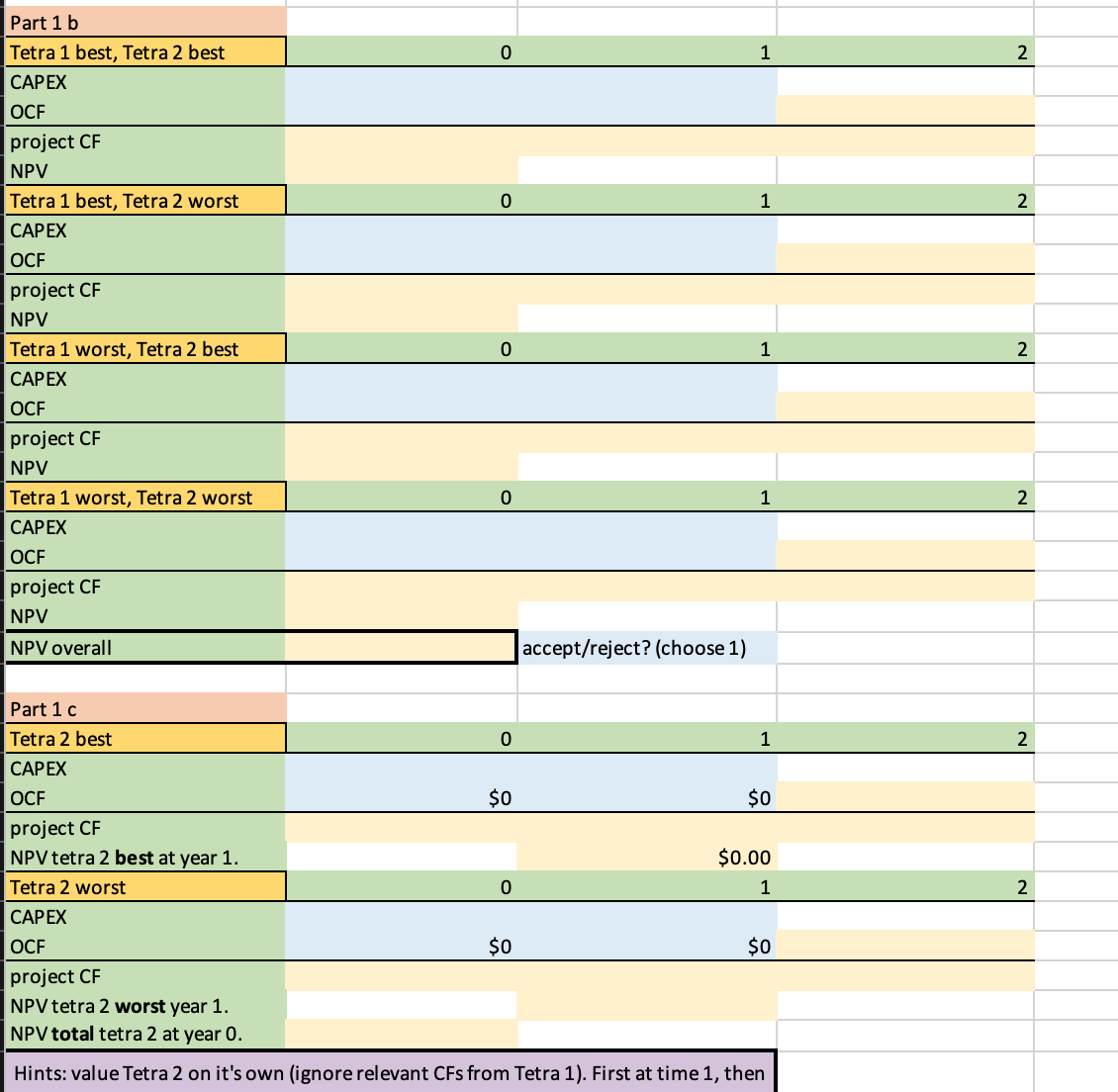In your new role as a project financial analyst, you are tasked to evaluate project Tetra, a new and innovative software that allows doctors from around the world to communicate current best practices in real time. The project has two phases: you may invest in the first, both, or neither. Phase 1 (Tetra 1) requires an initial investment of $100. One year later, Tetra 1 will produce project CFs of either $160 or $60, each with equal probability of occurrence. At this year 1 point and after cash flows have been received, you may invest an additional $100 for Tetra 2. One year later, Tetra 2 pays out either 20% more in project CFs than Tetra 1 or (equally likely) 20% less. No taxes need to be assumed.


Problem 1. In your new role as a project financial analyst, you are tasked to evaluate project Tetra, a new and innovative software that allows doctors from around the world to communicate current best practices in real time. The project has two phases: you may invest in the first, both, or neither. Phase 1 (Tetra 1) requires an initial investment of $100. One year later, Tetra 1 will produce project CFs of either $160 or $60, each with equal probability of occurrence. At this year 1 point and after cash flows have been received, you may invest an additional $100 for Tetra 2. One year later, Tetra 2 pays out either 20% more in project CFs than Tetra 1 or (equally likely) 20% less. No taxes need to be assumed. Part 1 a: How much would the Tetra project be worth if it offered only the Tetra 1 opportunity? Part 1 b: How much would Tetra be worth if you had to make the entire decision today, once and for all, whether or not to invest in Tetra? Part 1 c: How much is Tetra project worth if you have access to both Tetra 1 and 2, but can wait to decide whether to invest in Tetra 2 after 1 year (i.e. can see Tetra 1 through)? Utilize Typing Numbers is okay The Scenario Labels Hints Equations/functions 0.10 required return 0 1 Part 1 a Tetra 1 best Project CF PV Project CFs NPV (100.00) (100.00) $ 45.46 160 145.46 $ $ 0 1 Tetra 1 worst Project CF PV Project CFS NPV NPV of whole project accept/reject? (choose 1) 0 1 2. Part 1 b Tetra 1 best, Tetra 2 best CAPEX OCF project CF 0 1 2 0 1 2 Part 1 b Tetra 1 best, Tetra 2 best CAPEX OCF project CF NPV Tetra 1 best, Tetra 2 worst CAPEX OCF project CF NPV Tetra 1 worst, Tetra 2 best CAPEX OCF project CF NPV Tetra 1 worst, Tetra 2 worst CAPEX OCF project CF NPV 0 2 0 1 2 NPV overall accept/reject? (choose 1) 2 Part 1c Tetra 2 best 0 1 CAPEX OCF $0 $0 project CF NPV tetra 2 best at year 1. $0.00 Tetra 2 worst 0 1 CAPEX OCF $0 $0 project CF NPV tetra 2 worst year 1. NPV total tetra 2 at year 0. Hints: value Tetra 2 on it's own (ignore relevant CFs from Tetra 1). First at time 1, then 2 Hints: value Tetra 2 on it's own (ignore relevant CFs from Tetra 1). First at time 1, then discount back to time 0. NPV for whole project & option $0.00 accept/reject? (choose 1) Hints: You've already valued Tetra 1 in "Part 1a" (NPV from cell B20), now cell 056 is the NPV of Tetra 2, but remember the likelihood of taking on Tetra 2 is not 100%...calculate NPV of the whole project and the real option









